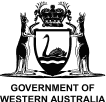Westport has partnered with the Western Australian Marine Science Institution (WAMSI) to deliver the $13.5 million WAMSI-Westport Marine Science Program. This 3-year program is developing the latest data, information and modelling on the complex environmental systems and community values associated with Cockburn Sound.
Project 3.1 Water and sediment quality monitoring
Research theme: Water and Sediment Quality
Researchers: C Wilson and K Wienczugow
Publication date: September 2024
The Kwinana Industrial Area has been operating in Cockburn Sound since the 1950’s.
Since the 1990’s, there has been substantial focus on improving how industry interacted with Cockburn Sound to improve the environment.
This study looked to establish a water quality baseline dataset for toxicants across Cockburn Sound, Owen Anchorage, Gage Roads and Deep Water Channel, determining potential contamination by metals like cadmium and mercury, organic compounds like hydrocarbons.
Two separate sampling methods were undertaken: a ‘snapshot’ water quality sampling survey, which collected water samples for laboratory testing and passive sampling, using Diffusive Gradients Thin films.
The first was water quality ‘snapshot’ survey was undertaken over two days in September 2023 at twenty-eight sampling sites positioned in Owen Anchorage, Cockburn Sound, Warnbro Sound and Deep-Water Channel. Samples were collected manually via a Niskin bottle with samples processed on site and then sent to a laboratory for testing.
The second sampling technique involved deploying Diffusive Gradients in Thin film (DGT) devices for a 13-day period at 10 of the initial 28 sites, which were then sent for analysis.
The report compared the tested samples to the Australian Water Quality Default Guideline values (ANZG 2018) as well as the Cockburn Sound State Environment Policy (2015) Environmental Quality guidelines (EQGs), relevant for the different areas of ecological protection in Cockburn Sound, as noted in the image.
What the report found
- In the moderate and high protection areas in Cockburn Sound, metals/metalloids sampled were below environmental guideline levels, except for copper, which was slightly above the guideline in some areas.
- Organic chemicals, including BTEX (like benzene), Polycyclic Aromatic Hydrocarbons (includes up to 100 different chemicals) and Total Petroleum Hydrocarbons were all below laboratory limits of reporting for all sites, depths and protection areas.
- For the DGT sampling, all metals/metalloids analysed were below the ANZG (2018) default guidelines for 99% species protection, in all areas.
- Toxicant levels in the study area were generally low and did not pose a risk to the aquatic ecosystem
How Westport will use the report
The study has established a thorough and contemporary baseline dataset for water quality toxicants within Cockburn Sound, Owen Anchorage, Warnbro Sound, Gage Roads and Deep Water Channel. In general, the study demonstrated that toxicant levels in the area were generally low and did not pose a risk to the aquatic ecosystem. This data will provide benchmarks for Westport’s environmental management programs during and after port development.
Read the full report here.





